Bunion Exercises
Read More >
A bunion is a condition that affects the joint of a toe, primarily the big toe joint or the little toe, resulting in a bony prominence on the joint and a change in the position of the big toe joint. In contrast, a corn is a condition that affects the skin due to excess pressure that result in callus formation and inward growth of the skin in a corn shape.
Bunions (Hallux Valgus) can be genetic, or they can develop slowly over time due to narrow-fitting shoes, poor biomechanics or arthritis. When a bunion occurs in the big toe it can cause swelling, pain and inflammation of the joint while the big toe begins to deviate towards the second toe. The big toe may overlap the second toe in severe cases. When a bunion occurs in the little toe, it is known as a Tailor’s Bunion.
Corns occur from excess pressure on the skin and are most commonly found on the side of the big toe, outside of the pinky toe or on top of hammer toes. Excess pressure leads to callus formation, and inward growth of the tissue to form a corn shape that is painful when direct pressure is applied.
A Bunion can be diagnosed clinically by a Physical Therapist or Podiatrist without the need for a scan and treatment includes strengthening exercises, advice on footwear and bunion correctors. Corns should be treated by a Chiropodist who uses tools to shave off and remove a corn.
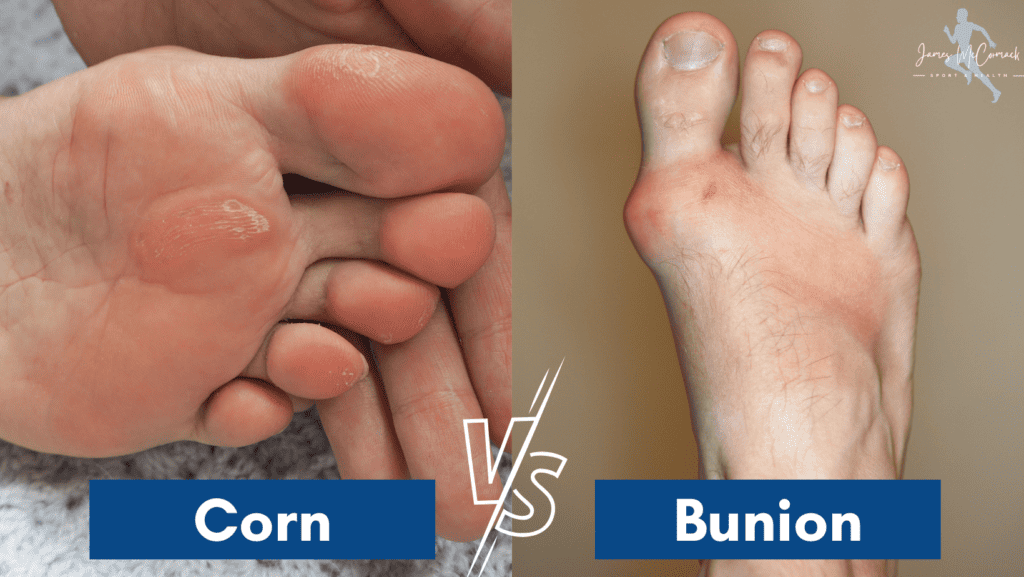
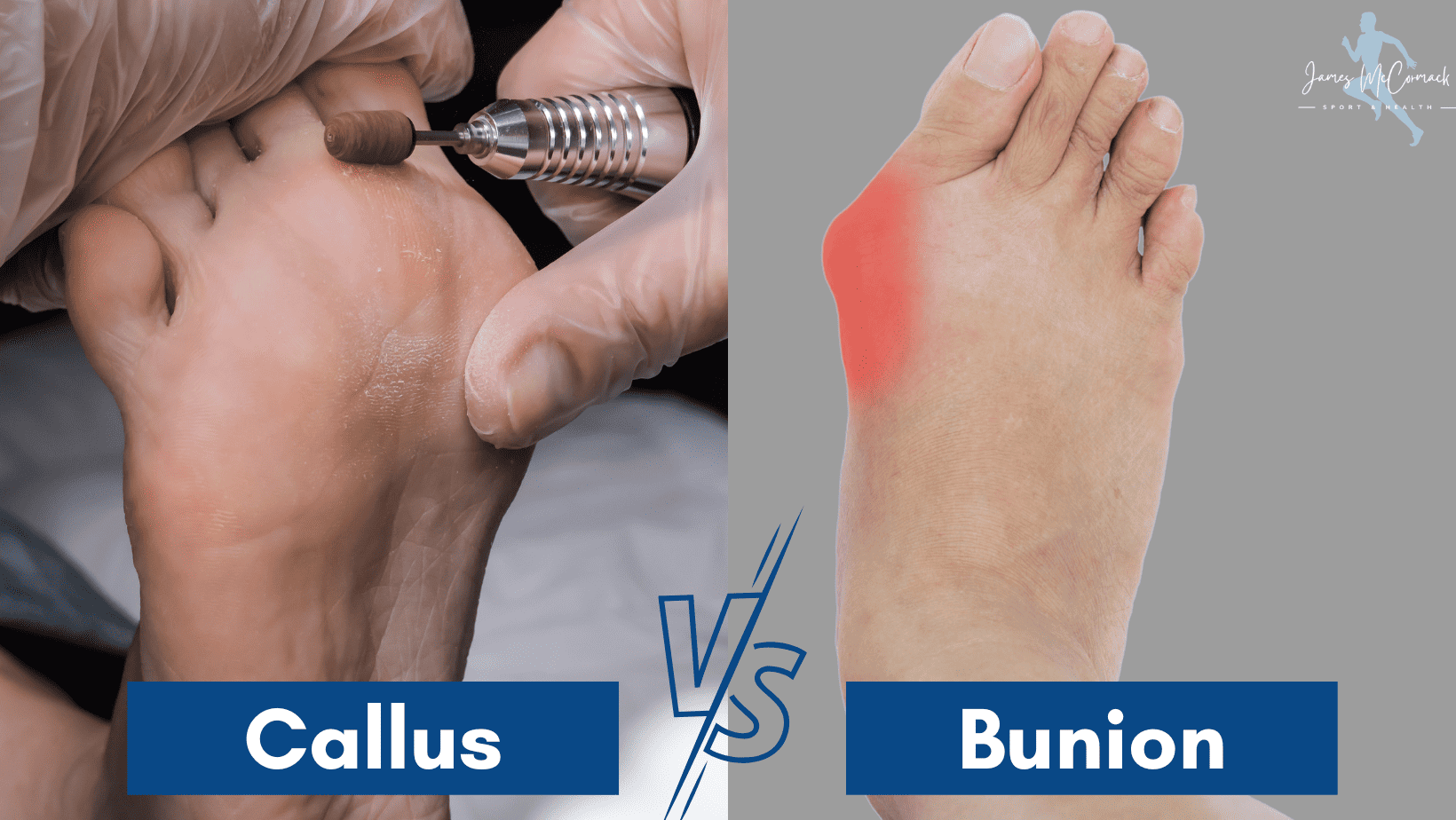
A callus differs from a bunion in that a callus is the accumulation of hard skin on the big toe joint, whereas a bunion is the deviation of the big toe joint away from the midline.
A callus and a bunion can come hand in hand, but treatment for a callus can be with regular moisturising of the foot, while a bunion should be seen clinically by a Physical Therapist.
A bone spur is a bone growth that occurs in joints for various reasons, such as microtrauma or arthritis, whereas a bunion is a structural change in the position of the big toe.
In most cases, we can have a pain-free bone spur that is present for years; however, some bone spurs can press on soft tissue or surround bony structures causing pain and swelling.
As a bunion affects the toe joint, it can also feature bone spurs due to changes in the amount of cartilage present in the joint. At the same time, both conditions can be present independently of each other.
Related Article: How to shrink a Bunion Naturally

Gout is a prevalent but complex form of inflammatory arthritis that can affect people of any age and is most commonly seen in the big toe joint. In contrast, a bunion is a slow, progressive condition that causes a change in the position of the big toe.
Gout can be an excruciatingly painful condition where the big toe is constantly painful and highly sensitive to touch, while the joint may be red and swollen. Symptoms can last a few days up to a few weeks, and they are usually caused by lifestyle influences such as high red meat consumption.
A bunion is a hereditary condition that you can be born with or develop over time due to poorly fitted shoes or issues with a person’s biomechanics. Symptoms are worse with activity and pain-free at rest rather than the constant pain experienced with an episode of gout.
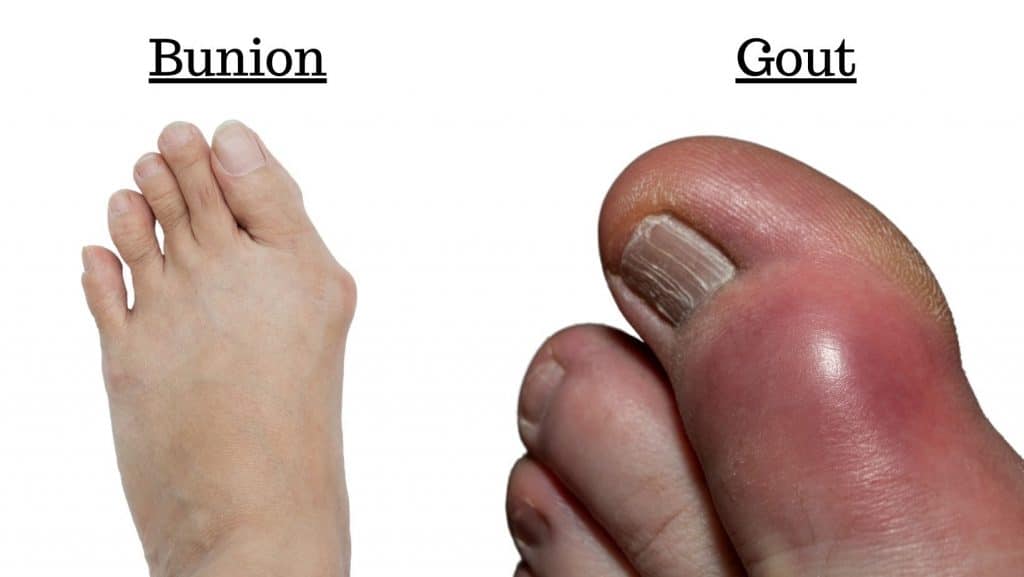
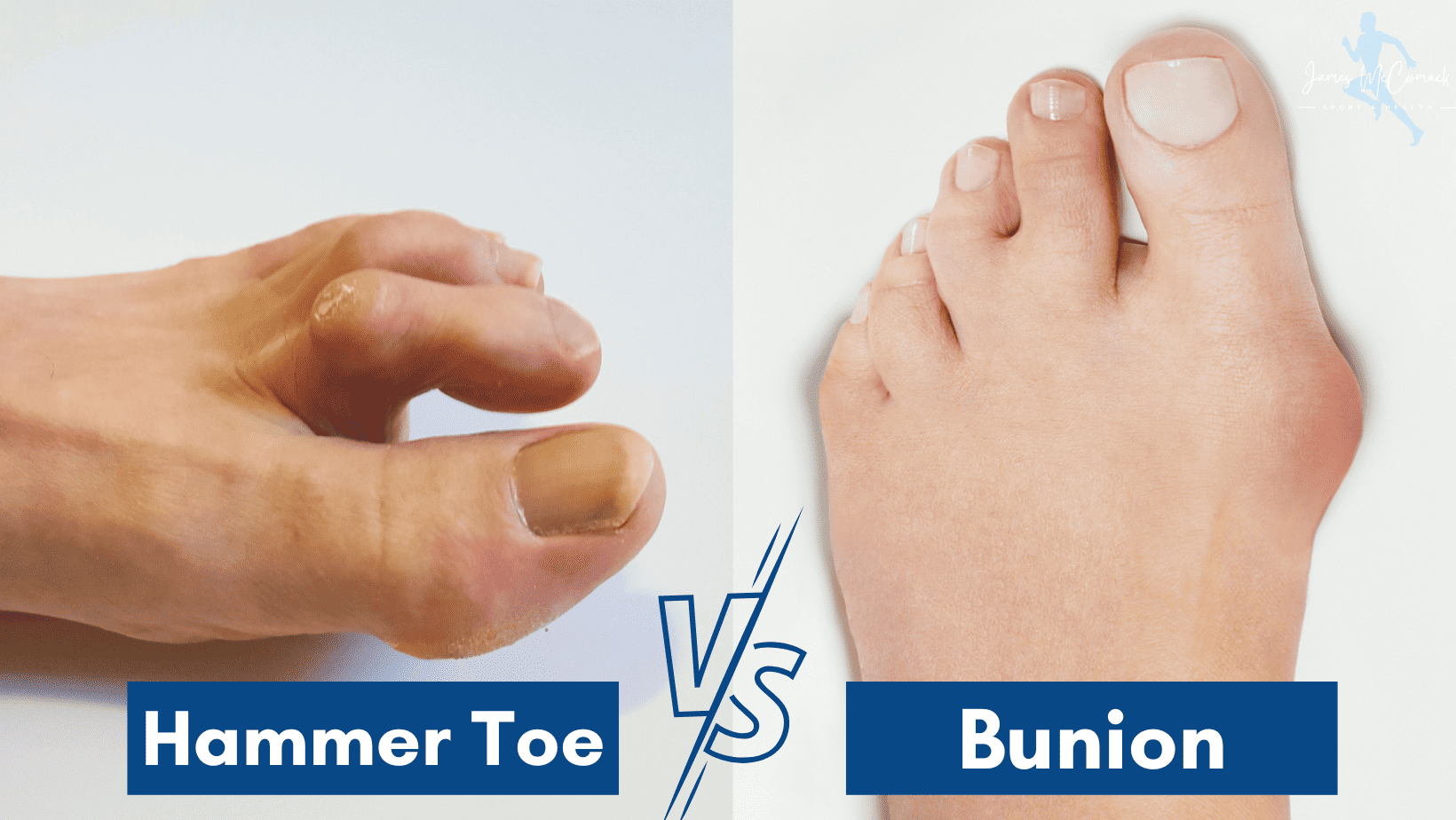
Hammer’s toes are a condition that affects the 2nd, 3rd or 4th toes where the toes claw into a shortened position whereas the a bunion affects the 1st or 5th toe result in a deviation in the position of the joint.
Hammer Toes result from an overload of the 2-4th toes when walking or running leading them to claw for extra stability. A bunion can be genetic, the result of arthritis or caused by narrow fitting shoes.
Hammertoes can be treated conservatively with exercises, splints and the correct footwear choices.
Hallux Rigidus is a condition affecting the big toe joint that causes it to be extremely stiff. This is a condition that someone can be born with or develop if the big toe joint becomes arthritic.
A bunion is a structural change in the position of the big toe where it drifts away from the midline, a hallux rigidus can cause thiss but it is a less common cause of bunions.
Related Article: Hallux Rigidus: Symptoms and Treatment
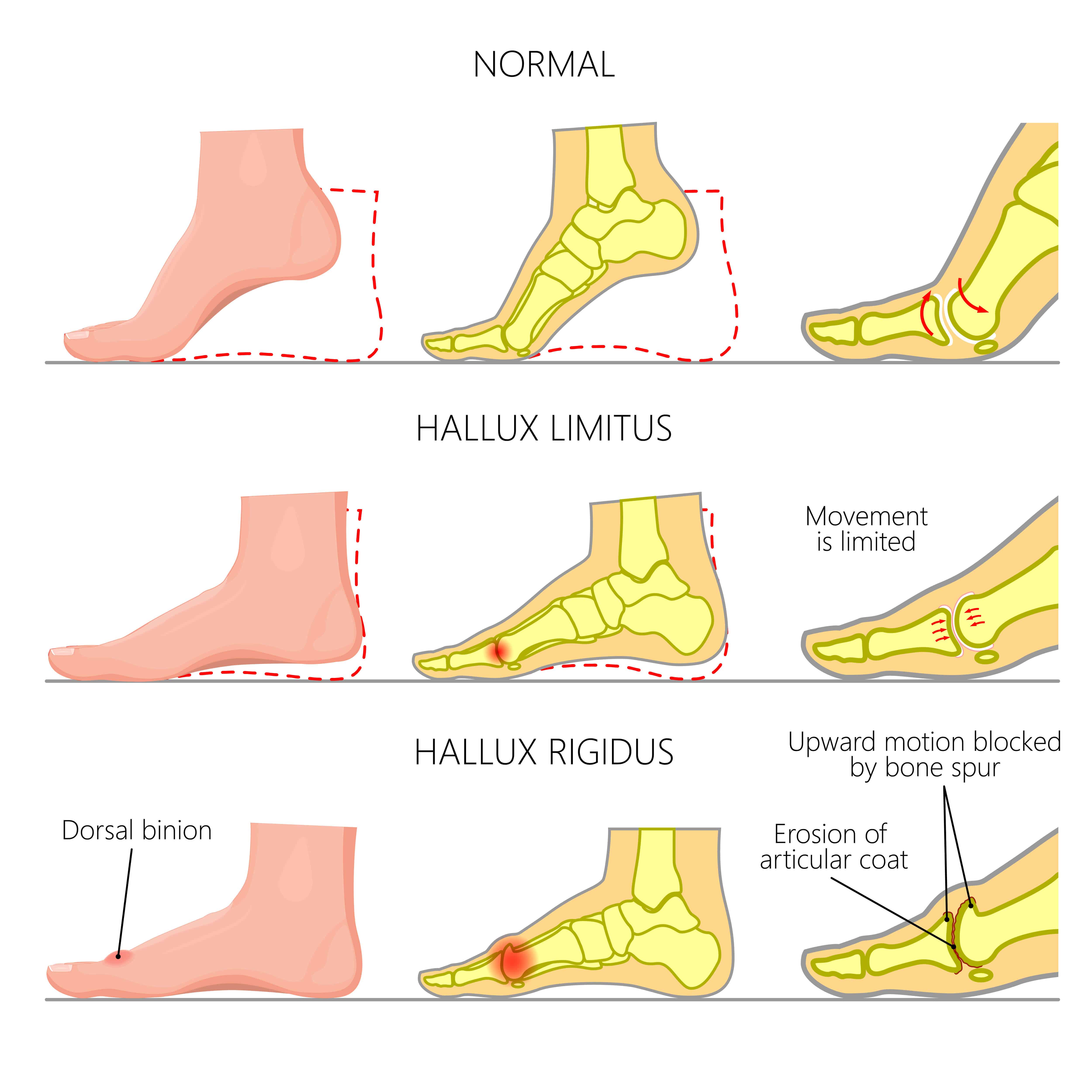
This is not medical advice. We recommend a consultation with a medical professional such as James McCormack. He offers Online Physiotherapy Appointments weekly.